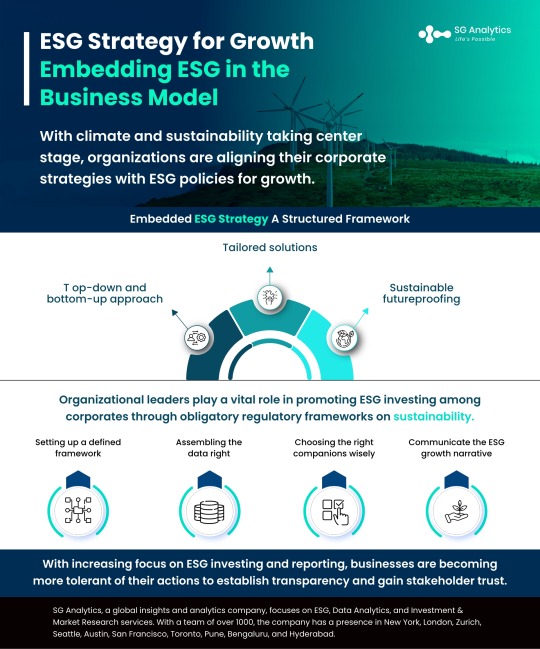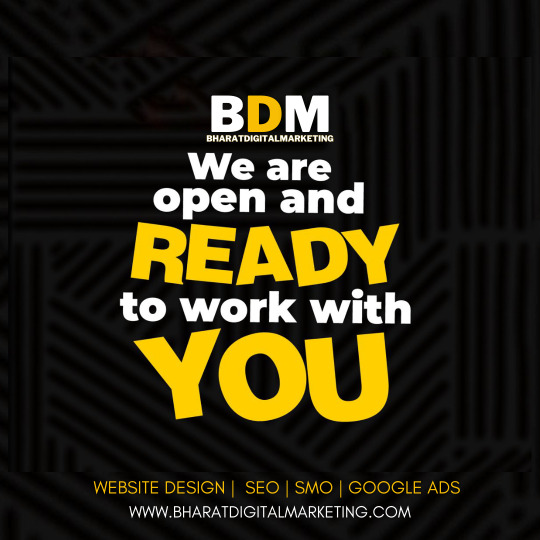#corporate and business strategy
Explore tagged Tumblr posts
Text

With increasing focus on ESG investing and reporting, businesses are becoming more tolerant of their actions to establish transparency and gain stakeholder trust.
#ESG Strategy#corporate strategy#sustainability strategy#business sustainability strategies#corporate and business strategy#long-term business goals#strategic business consulting
0 notes
Text
it would be so funny if tumblr became good because the dev team isnt stretched thin maintaining their investor-pleasing changes that take months to roll out only for everyone to get mad at them. id love it
#pers#i think the reason people keep push pulling on 'support tumblr!' and 'never support tumblr. im not using another website though'#is like badges and dash gifts are a very reasonable monetization strategy. they're fun and cute baubles that don't have a corporate feel#but automattic's moderation is fucking HEIIIINOUUUUUS its so bad. its transphobic as fuck and clunky and not fast enough.#it took them like 2 years to handle botfarms using general tags and only because the appstore was like 'hey. whats going on in there'#and they started the scrub by nuking tags entirely. BAD fucking moderation#and of course the investment pleasing. so the instinct is to go 'why should i make the website not caring for its users profitable'#so i think automattic pulling out of tumblr's business is kind of hopeful. because everyone hates them and hope they explode.
24 notes
·
View notes
Text
Social CRM: Engaging Customers Across Platforms for Better Relationships
In today’s digital landscape, where consumers engage with brands across various social channels, the importance of Social Customer Relationship Management (Social CRM) cannot be overstated. By effectively utilizing Social CRM strategies, businesses can foster deeper relationships with customers, enhance engagement, and drive loyalty, all while navigating the complexities of multiple platforms.…
#best practices for brand management#Branding strategies for small businesses#building brand loyalty#business growth strategies#corporate social responsibility#creating a strong brand identity#CRM#customer relationship management#Customers#digital marketing for startups#e-commerce tips for businesses#Engaging#how to scale your business.#how to start a successful business#importance of social media for businesses#influencer marketing for brands#Platforms#Relationships#small business funding options#Social#top business trends 2024
2 notes
·
View notes
Text

شركة GooglePD - احترافية التصميم والإبداع الرقمي
مرحباً بكم في GooglePD، شركتكم الرائدة في تقديم الحلول الرقمية الحديثة والخدمات الإبداعية. نحن هنا لنرتقي بأعمالكم ونحول أفكاركم إلى واقع ملموس بأعلى معايير الاحترافية.
خدماتنا:
التسويق الرقمي نضع خطط تسويقية مبتكرة ومدروسة بدقة لتعزيز وجودكم الرقمي وزيادة مبيعاتكم.
إدارة صفحات السوشيال ميديا فريقنا المتخصص يقدم إدارة احترافية لحساباتكم على مختلف المنصات، مع محتوى يجذب الانتباه ويزيد من التفاعل.
إنشاء المواقع الإلكترونية تصميم مواقع مميزة وسهلة الاستخدام تناسب هوية علامتكم التجارية وتلبي احتياجات جمهوركم.
تصميم الصور صور إبداعية تعكس هوية شركتكم وتجذب الأنظار، مع مراعاة التفاصيل الدقيقة والجودة العالية.
إنتاج الفيديوهات نصنع فيديوهات إبداعية تُبرز منتجاتكم وخدماتكم بأفضل طريقة ممكنة، مع مراعاة الجانب الإبداعي والتقني.
تصميم الشعارات نبتكر شعارات تعبر عن رؤيتكم وقيمكم، وتترك انطباعاً لا يُنسى لدى عملائكم.
لماذا تختار GooglePD؟
إبداع بلا حدود: نقدم أفكاراً فريدة ومبتكرة تعزز من تميز علامتكم التجارية.
احترافية مضمونة: فريقنا من الخبراء يضمن تقديم خدمات على أعلى مستوى من الجودة.
دعم مستمر: نحن هنا لنكون شركاء نجاحكم في كل خطوة من رحلتكم الرقمية.
انطلق بأعمالك إلى آفاق جديدة مع GooglePD. لأننا نصمم المستقبل بأيدي محترفة!
#Best digital marketing company.#Professional social media management services.#How to increase engagement on social media.#Effective digital marketing strategies.#أفضل شركة تسويق رقمي.#إدارة صفحات السوشيال ميديا باحترافية.#كيفية زيادة التفاعل على مواقع التواصل.#خطة تسويق رقمي فعالة.#Professional website design services.#Build a website that suits my business.#Creative logo design services.#Best company for corporate logo design.#شركة تصميم مواقع احترافية.#تصميم موقع يناسب نشاطي التجاري.#تصميم شعارات مبتكرة.#أفضل شركة تصميم شعارات للشركات.#Professional image design for websites and social media.#High-quality video production services.#Creative video ideas for businesses.#Attractive ad design services.#Trusted digital services company.#High-quality design at an affordable price.#Creative and professional marketing solutions.#Complete marketing services for small businesses.#A company that provides design and technical support services.#Where to find a company to manage my marketing campaigns.#A company to help develop my brand identity.#تصميم صور احترافية للمواقع والسوشيال ميديا.#إنتاج فيديوهات تسويقية مميزة.#أفكار فيديو إبداعية للشركات.
2 notes
·
View notes
Text
How to become a great creative director?
Being a great creative director requires a mix of leadership, vision, and adaptability. Here are some key qualities and strategies to help you excel in this role:
1. Develop a Clear Vision
- Establish a strong creative vision that aligns with the brand’s goals and values. This will provide direction for your team and guide decision-making.
- Communicate your vision clearly to your team, clients, and stakeholders. Make sure everyone understands the goals and objectives.
2. Cultivate Your Creativity and Stay Inspired
- Stay up-to-date with design trends, art, technology, and cultural movements. Regularly consume content outside of your field to broaden your perspective.
- Encourage a culture of experimentation and exploration. Great ideas often come from unexpected places, so be open to unconventional sources of inspiration.
3. Empower and Trust Your Team
- Hire skilled, diverse team members and give them the freedom to bring their ideas to the table. Trust their expertise and let them take ownership of their work.
- Provide constructive feedback that encourages growth and improvement. Aim to be a mentor, not just a manager.
4. Be a Strong Communicator
- Articulate ideas effectively to clients and team members. Ensure that your creative vision is understood and embraced.
- Listen actively to your team’s input and the client’s needs. Open communication fosters collaboration and builds trust.
5. Adapt and Problem-Solve
- Creative projects often encounter unexpected challenges. Stay flexible and approach problems with a solution-oriented mindset.
- Encourage your team to see challenges as opportunities for innovation. A positive attitude toward problem-solving can boost morale and productivity.
6. Balance Creativity with Strategy
- Understand the business goals and market realities that drive your projects. Make sure the creative work aligns with these objectives.
- Consider the target audience and the brand’s identity when making creative decisions. Great creative direction marries aesthetic excellence with strategic purpose.
7. Foster a Collaborative Environment
- Build a culture where ideas are shared openly, and all team members feel valued. Collaboration often leads to the best creative outcomes.
- Encourage cross-functional teamwork, involving members from other departments like marketing, sales, or product development. A well-rounded perspective enhances creativity.
8. Lead by Example
- Show passion and commitment to your work. When your team sees your dedication, they’re more likely to bring the same energy.
- Stay calm and composed, especially in high-pressure situations. Your team looks to you for guidance, so maintaining a positive attitude can help navigate challenges.
9. Stay Client-Focused
- Understand your client’s needs, preferences, and brand. Build relationships with clients to foster trust and collaboration.
- Present your ideas confidently, but be open to feedback. Work towards solutions that satisfy both creative integrity and client goals.
10. Keep Learning and Evolving
- Seek feedback on your leadership style and be open to improvement. Great leaders are always learning and adapting.
- Invest in your personal and professional growth. Attend workshops, conferences, and engage with other creative directors to share insights and learn from each other.
A great creative director inspires, leads, and pushes the boundaries of what’s possible, while balancing creativity with business acumen. By fostering a supportive environment and encouraging innovation, you can help your team deliver exceptional results.
By ChatGPT
#ChatGPT#Ai#ai generated#creative process#creative director#art director#Art direction#creative direction#Quote Of The Day#Askhole#Client#Employee#Job#Work#Freelance#Graphic Designer#Typography#Graphic Design#Creative#Ideas#Corporate#Branding#Marketing#Strategy#Business#Advertising#Money#ui#ux#web design
6 notes
·
View notes
Text

© Peter Arkle 2024 SHORT TERM THINKING
2 notes
·
View notes
Text

Bharat Digital Marketing is a leading digital marketing agency
#Brand identity design#Brand development services#Marketing strategy services#Digital branding services#Brand management services#Creative branding solutions#Brand positioning services#Corporate branding agency#Branding and advertising agency#Branding consultancy services#Rebranding services#Brand communication services#Branding for startups#Branding for small businesses#Branding for entrepreneurs#Branding for e-commerce businesses#Branding for B2B businesses#bharatdigitalmarketing#digitalmarketingagency#digitalmarketingtips#digitalmarketingbusiness#bdm#digitalmarketingexpert#digitalmarketingservices#bdmpost
2 notes
·
View notes
Text
🟠🧨🦉What's His Next Move? ELON MUSK Remote Viewed (Tone: 197)
What’s next for Elon Musk? 🔥 Remote viewers predict industry wars, a secret energy project, and political moves. #ElonMusk #FuturePredictions
Posted April 17th, 2024 by @FutureForecasters ABOUT THIS VIDEO: This video, titled “What’s His Next Move? 🧨💥 ELON MUSK Remote Viewed”, explores Elon Musk’s future business plans and potential conflicts through remote viewing. The discussion suggests that Musk is facing significant opposition, possibly from major industries, governing bodies, or even global political forces. The remote viewers…
#2024 Forecast#2025 Trends#ai#BRICS#Business Strategy#capitalism#Corporate Wars#Disruption#Elon Musk#Free Energy#future predictions#global economy#government#Industry Clashes#innovation#Neuralink#politics#Power Struggles#remote viewing#SpaceX#technology#Tesla#Twitter
0 notes
Text
Mastering Decision-Making: The Key to Effective Leadership
Decision-making is at the heart of leadership. Every day, leaders are faced with choices that can shape careers, businesses, and industries. But making the right decision isn't always about logic—it’s about balancing strategy, ethics, and impact. In today’s fast-paced world, leaders must navigate complex decisions with clarity and confidence. Whether it’s choosing the right team, responding to crises, or making ethical calls, the best leaders don’t just rely on instinct—they use structured models and frameworks to guide them. 🔹 Why Decision-Making Matters in Leadership Decisions define a leader’s success. Poor choices lead to financial losses, reputational damage, and team disengagement, while strong decisions drive innovation, trust, and sustainable growth. 🔹 Challenges Leaders Face in Decision-Making: ✅ Navigating ethical dilemmas where the "right" choice isn’t obvious ✅ Balancing short-term wins vs. long-term success ✅ Managing uncertainty and risk in high-stakes situations ✅ Ensuring fairness, inclusion, and diversity in leadership decisions 🔹 The Best Decision-Making Models for Leaders: 📌 The Twelve Questions Model – A structured way to assess ethical and strategic impact 📌 The Rational Decision-Making Model – A logical step-by-step process for evaluating choices 📌 The Intuitive Approach – When gut instinct plays a crucial role in fast-moving environments 🚀 Want to elevate your leadership skills? Learn how to make better, faster, and more ethical decisions—because great leaders aren’t just born, they’re made. #Leadership #DecisionMaking #BusinessStrategy #EthicalLeadership #Innovation
Mastering Decision-Making: The Skill That Defines Great Leaders Leadership isn’t just about vision—it’s about making the right decisions at the right time. Every great leader, from Steve Jobs to Warren Buffett, understands that decision-making can make or break an organization. Yet, with constant pressure, high stakes, and ethical dilemmas, making the right call isn’t always easy. So how do…
#business strategy#corporate leadership#critical thinking#decision making#ethics#executive decisions#leadership#leadership mindset#problem-solving#professional growth
0 notes
Text
Afsar Ebrahim- Executive Director, Kick Advisory - Financial Consultant
Afsar Ebrahim is a skilled corporate strategist and financial consultant with years of experience in guiding businesses to success. As the Executive Director at Kick Advisory, he helps companies grow, make smart financial decisions, and plan for the future. Afsar Ebrahim’s expertise in business strategy makes him a trusted name in the industry.

0 notes
Text
ESG Growth Strategy: Integrating ESG into Business Strategies
Organisations are paying more attention to environmental, social, and governance (ESG) as climate and sustainability take centre stage in every operational framework. Only a few organisations, however, have been able to connect their plans with it. To provide enormous financial and non-financial value, organisations must integrate a complete ESG vision into their company strategy. Increased productivity, cost reduction, encouraging the use of sustainable products and solutions, and improved access to funding are all examples of financial value. Furthermore, ESG-focused businesses must improve operational efficiency to reduce staff turnover rates and to encourage innovation through effective governance and risk management.
#ESG Strategy#sustainability strategy#business sustainability strategies#corporate and business strategy#long-term business goals#strategic business consulting
0 notes
Text

Fast & Secure NGO CSR Grants – Fiinovation CSR Company
Fiinovation, a leading CSR consultancy, connects NGOs with corporate funding for impactful social projects. Secure CSR funds effortlessly and drive change with expert guidance. Partner with Fiinovation today for seamless NGO funding solutions! Contact us now to accelerate your mission.
#csr#csr initiatives#corporate social responsibility#fiinovation csr#reviews#business#fiinovation#finance#csr strategy#fiinovation linkedin#csr activities#financial#f
0 notes
Text
Color, Typography, and Beyond: The Building Blocks of Brand Identity
In today’s competitive marketplace, a well-defined brand identity is critical for businesses seeking to make a memorable impression. Among the essential elements of branding, color and typography play pivotal roles, shaping how consumers perceive and connect with a brand. This article explores "Color, Typography, and Beyond: The Building Blocks of Brand Identity," providing insights into how…
#best practices for brand management#Blocks#Brand#Branding strategies for small businesses#Building#building brand loyalty#business growth strategies#Color#corporate social responsibility#creating a strong brand identity#customer relationship management#digital marketing for startups#e-commerce tips for businesses#how to scale your business.#how to start a successful business#Identity#importance of social media for businesses#influencer marketing for brands#small business funding options#top business trends 2024#Typography
0 notes
Text
Unlocking Sustainable Growth: Proven Strategies for Business Expansion
For good business growth strategies to work, you must balance effort and sustainability with care. Businesses that manage to expand their operations know that development is not only about boosting income – it's about creating a strong base that can hold up extended growth while keeping quality in operations.
Strategic Market Positioning
Positioning in the market is a fundamental part of development strategies for business success. Businesses should discern their unique value and use it to set them apart from rivals. This requires comprehension of customer requirements, examination of spaces within the market, and creation of solutions that respond precisely to problems not yet tackled by competitors.
Data-Driven Decision Making
Today's businesses use data analysis a lot for making decisions about growing. By studying how customers behave, what trends are in the market, and measures of operations, companies can find opportunities to grow more accurately. This method focused on data helps lessen risks and enables organizations to distribute resources better.
Building Scalable Systems
Putting in place systems and processes that can grow is very important for continuous growth. Often, good strategies to make businesses larger include putting money in technology and automatic machines. This helps manage more work without needing many new resources or people.
Customer-Centric Innovation
Innovation must always be directed by the needs of customers, not by our own guesses inside the company. Companies that keep a strong bond with their clients can predict better what market requires and change their products to suit these demands. This method focusing on customers makes sure business tactics for growth stay in line with what the market wants.
Financial Management and Resource Allocation
Management of finances in a proper manner is very important for continuous growth. Organizations need to keep good cash flow while they spend on opportunities for expansion. This requires thoughtful planning, intelligent distribution of resources and holding onto emergency savings to manage unforeseeable problems.
Building Strong Teams
The growth possibility of a company frequently relies on the quality of its team. Investing in getting talent, training them and keeping them is helpful to make a workforce that can carry out difficult expansion plans. Strong leadership and unmistakable lines for communication guarantee all team members comprehend and labor towards shared objectives.
Measuring Success and Adapting
Monitoring of performance regularly and readiness to modify strategies are important for success over a lengthy period. Companies need to set clear measures for assessing growth advancement, also they should be ready to change their method depending on the results and alterations in market situations.
Final Words
For a business to grow sustainably, it needs an all-inclusive approach combining strategic planning, superb operations and flexibility. If companies concentrate on these important areas while keeping equilibrium between swift growth and stable operations, they can establish a robust base for continuing success. The secret is seeing growth not like a short race but more as being in it for the longest haul where continual advancements with flexibility finally result in sustainable development. Visit us now to know more about business growth strategies.
#business growth strategies#ca#tax professionals#chartered accountants auckland#chartered accountant firm#accounting consulting services#management accounting services#strategy development consultants#strategic business management and planning#corporate strategic planning
0 notes
Text
BKThakur: Leading Accounting Company in Delhi for Business & Tax Services
BKThakur is Delhi's top choice for expert business accounting and tax services. As a leading accounting company, we offer comprehensive solutions tailored to your business needs, ensuring accuracy and compliance. Our experienced team of chartered accountants specializes in managing your finances, optimizing tax strategies, and providing reliable guidance. Whether you're a small business or a large corporation, BKThakur delivers personalized services designed to help you achieve financial success. Trust us to handle everything from routine accounting tasks to complex tax consultations. Partner with BKThakur for top-tier business and tax services in Delhi, and experience the difference of working with industry experts.
#BKThakur is Delhi's top choice for expert business accounting and tax services. As a leading accounting company#we offer comprehensive solutions tailored to your business needs#optimizing tax strategies#and providing reliable guidance. Whether you're a small business or a large corporation#and experience the difference of working with industry experts.
0 notes
Text
Nokia's Epic Comeback
Share your thoughts on Nokia's comeback!
Welcome to an inspiring tale of corporate revival. Here we explore the journey of Nokia. The brand once dominated the mobile world. Still, it faced a steep decline with the smartphone revolution. Nokia has undergone a remarkable transformation. It is now a leader in the 5G arena. This story isn’t just about tech; it’s about resilience, strategy, and innovation. Think of Nokia as the “comeback…
#5g technology#business transformation#nokia 5g#nokia 5g advancements#nokia 5g innovation#nokia business strategy#nokia comeback#nokia corporate strategy#nokia evolution#nokia resurgence#nokia revival#nokia transformation#tech innovation#telecom industry
0 notes